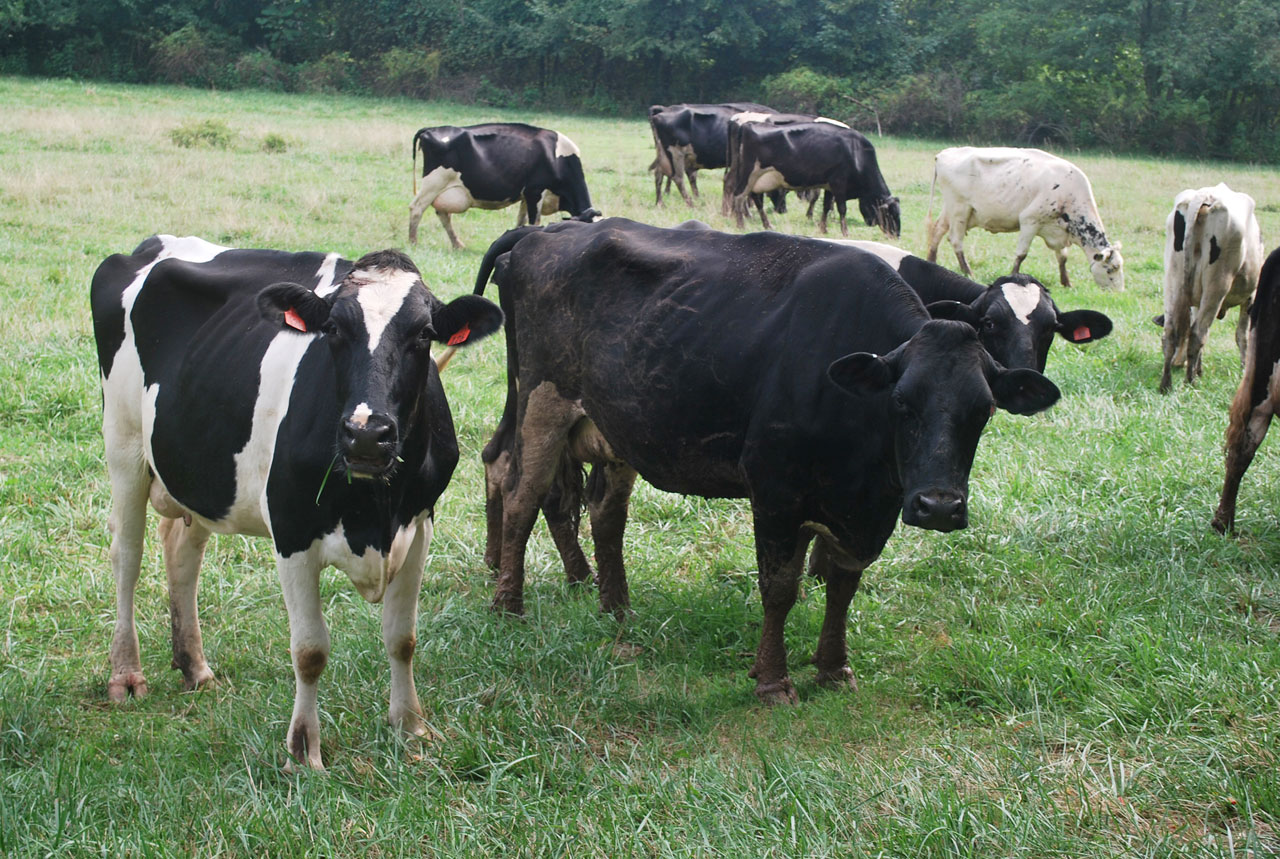Tuesday, April 11, 2017 - Ben Bartlett, DVM and low-stress handling and grazing specialist, held a webinar recently for the National Dairy Farmers Assuring Responsible Management (FARM) Program entitled “Dairy Stockmanship Skills for Low-Stress  Handling.” He explained how understanding cattle behavior is the basis for how dairy farmers should treat their animals.
Handling.” He explained how understanding cattle behavior is the basis for how dairy farmers should treat their animals.
Here are some tidbits of information from his presentation.
- Cattle have a wide range of vision horizontally (300 degrees to 340 degrees), but they can only see 60 degrees vertically. This would be similar to a person covering the lower half of their vision. This is why, when on a ranch or in the wild, there are cow paths – the first cow looks down to see where it is going while the rest just follow the one in front of them.
- Cattle can detect noises at lower volumes with a larger frequency range than humans. However, they have a poor ability to locate where the sound is coming. Humans can locate the source of a noise to a range of 5 degrees, whereas cows can only locate the source to a range of 30 degrees. Not knowing where the sound is coming from is frightening for the cows. To make the most of this understanding, keep noise to a minimum in all situations.
- As a prey animal, a cow identifies something as a predator based on its eyes – round and at the front of the face rather than on the sides. This immediately places humans into the predator category.
- Around a cow, there are three zones –flight, fight or freeze – that are the foundation for how they react to any predator based on how close they are. The sizes of these zones vary depending on the speed and angle at which the predator is approaching, the surrounding environment and conditions, and the cow’s previous experiences.
- If anything unfamiliar enters the flight zone, it will spook a cow. As prey, a cow’s first instinct is to run with the herd. She will not stop to figure out what is spooking her because that is a good way to become lunch. By running with the herd, there is a higher probability the individual will avoid being caught. A cow does not need to outrun the predator – just the slowest cow in the herd.
- To move the cows, a person merely needs to walk slowly into the cows’ flight zone. This will get the herd moving without sending them into a total panic. Then, the person can just walk back and forth behind or alongside the herd to maintain movement. This way, he or she is not always in the blind spot and the cows will be less anxious.
- Bartlett emphasized the need to make sure the first impression is a great one. Cows have an incredible memory; they will remember that first contact with the herdsmen or the milkers, and that will be the basis for their actions every subsequent time. If the first experience is frightening, the cow has a 100 percent chance of being nervous the next time.
- Cows are creatures of habit. They like solid routines with the same experience each time. Anything new is upsetting and needs to be avoided at all costs. Granted, sometimes it is impossible to avoid new experiences. Proceeding slowly and remaining patient is the best thing to do at a time like that.
- Bovines in general have very powerful observational skills and are able to easily sense aggressions and tension. Therefore, employees need to remain calm and positive to keep the cows happy and relaxed.
While some of these may seem obvious, it is important to keep in mind that not all employees are aware and may need training in proper dairy stockmanship. These are learned skills and will take practice. However, in the end, it is worth it. As Bartlett said, proper dairy stockmanship will make dairy handling “enjoyable, safer, [and] it’s going to increase your profitability.”
Learn more at this link